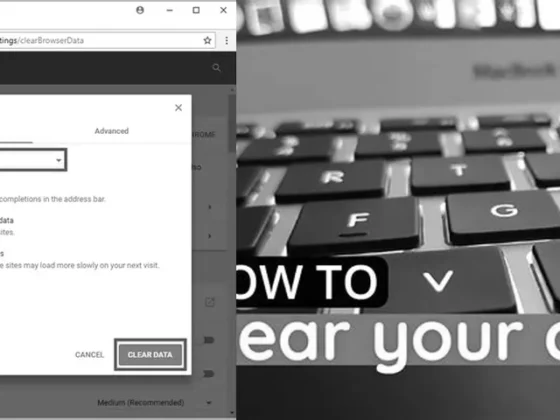How Can I Easily Enable Chrome Extensions in the Registry?: Are you a Chrome user who loves to enhance their browsing experience with extensions? If so, you may have wondered how to enable Chrome extensions in the registry. In this blog post, we will explore the ins and outs of enabling Chrome extensions through the Windows Registry. Whether you’re a tech-savvy individual or just someone looking to optimize their browser, we’ve got you covered. So, fasten your seatbelts and get ready to dive into the world of Chrome extensions and the registry!
Understanding Chrome Extensions and the Windows Registry
Chrome extensions can significantly enhance your browsing experience by adding functionality to Google’s popular web browser. However, there may be times when you need to manage these extensions beyond the browser interface, such as when deploying them across an organization. That’s where the Windows Registry comes in – a powerful tool that can be used to control various aspects of your computer’s operation, including Chrome extensions. Let’s delve into the process of enabling Chrome extensions through the Windows Registry.
Identifying the Correct Registry Key
Before making any changes to the Windows Registry, it’s crucial to identify the correct key. As the provided facts indicate, the key you’ll need depends on whether you’re using a 32-bit or 64-bit version of Windows:
- For 32-bit Windows: HKEY_LOCAL_MACHINE\Software\Google\Chrome\Extensions
- For 64-bit Windows: HKEY_LOCAL_MACHINE\Software\Wow6432Node\Google\Chrome\Extensions
To determine which version of Windows you’re running, you can check your system information or use the ‘About your PC’ option in Windows settings.
Creating and Naming the New Key
Once you’ve located the correct key path in the Registry Editor, the next step is creating a new key.
- Open the Registry Editor by typing ‘regedit’ into the Windows search bar and pressing Enter.
- Navigate to the appropriate Extensions key based on your Windows version.
- Right-click on the Extensions key, select New, and then Key.
- Name this new key with the same ID as your Chrome extension. For example, if your extension ID is ‘aaabbbcccdddeeefff’, name the key accordingly.
It’s essential to ensure that the extension ID matches exactly, as this is how Chrome identifies which extension the key pertains to.
Launching Chrome to Enable the Extension
With the new key in place, the next step is straightforward. Simply launch Google Chrome, and the browser will automatically detect the changes made in the registry. The extension with the corresponding ID should now be enabled and ready to use.
Managing Extensions within Chrome
If you’re not dealing with a bulk deployment or restrictions, managing extensions can be done within Chrome itself:
- Click the puzzle icon in the upper right corner of the Chrome toolbar.
- Select ‘Manage extensions’ to see a list of all installed extensions.
- Toggle the switch next to each extension to enable or disable it as needed.
This method is often more user-friendly and less risky than making direct changes to the Registry.
Unblocking Chrome Extensions as an Administrator
In some cases, extensions may be blocked by an administrator, especially in organizational settings. To unblock them:
- Log into the Google Admin console at admin.google.com.
- Navigate to Devices > Chrome management.
- Click on Apps & extensions.
- From here, you can adjust the policies to allow users to install other apps & extensions or add specific extensions by their ID.
This process is part of managing Chrome devices and services in a Google Workspace (formerly G Suite) environment.
Best Practices for Managing Extensions via the Registry
When managing Chrome extensions via the Registry, it’s important to adhere to some best practices:
- Always back up the Registry before making changes.
- Make changes on a per-user basis when possible, rather than system-wide.
- Ensure that you have administrative privileges to make the necessary changes.
- Verify the extension IDs carefully to avoid conflicts or issues.
These practices will help maintain system stability and ensure that the changes have the intended effect.
Conclusion
Enabling Chrome extensions in the Windows Registry can be a powerful way to manage your browsing experience, especially in a professional or enterprise environment. By following the steps outlined above, you can effectively control which extensions are available and ensure that they are properly deployed across your organization. Remember to handle the Registry with care and always keep the user’s needs in mind when making changes that affect their computing environment.
Whether you’re an IT administrator looking to streamline the deployment of Chrome extensions or a user wanting more control over your browser, understanding the relationship between Chrome and the Windows Registry is a valuable skill. With this knowledge, you can navigate the complexities of browser management with confidence and precision.
FAQ & Related Questions about How Do I Enable Chrome Extensions In The Registry?
Q: How do I enable Chrome extensions in the registry?
A: To enable Chrome extensions in the registry, you need to find or create the appropriate key in the registry based on your Windows version and create a new key with the same name as the ID of your extension.
Q: Where are Chrome extensions in the registry?
A: Chrome extensions can be found or created in the Windows registry under the following keys: 32-bit Windows: HKEY_LOCAL_MACHINE\Software\Google\Chrome\Extensions, 64-bit Windows: HKEY_LOCAL_MACHINE\Software\Wow6432Node\Google\Chrome\Extensions.
Q: How do I unblock Chrome extensions by administrator?
A: To unblock Chrome extensions by administrator, you can whitelist the extension in your Google Admin console by going to Devices > Chrome management and selecting and uploading the extracted folder of the extension.
Q: How do I enable and disable Chrome extensions fast?
A: To enable or disable Chrome extensions quickly, open your Chrome browser, click on the plugin icon in the toolbar, and select the extension you want to enable or disable from the list. The selected extension will be instantly toggled on/off without removing itself.
Q: How do I Undisable Chrome extensions?
A: To undisable Chrome extensions, open Chrome, go to More tools > Extensions, and uninstall the extension that has been disabled.


